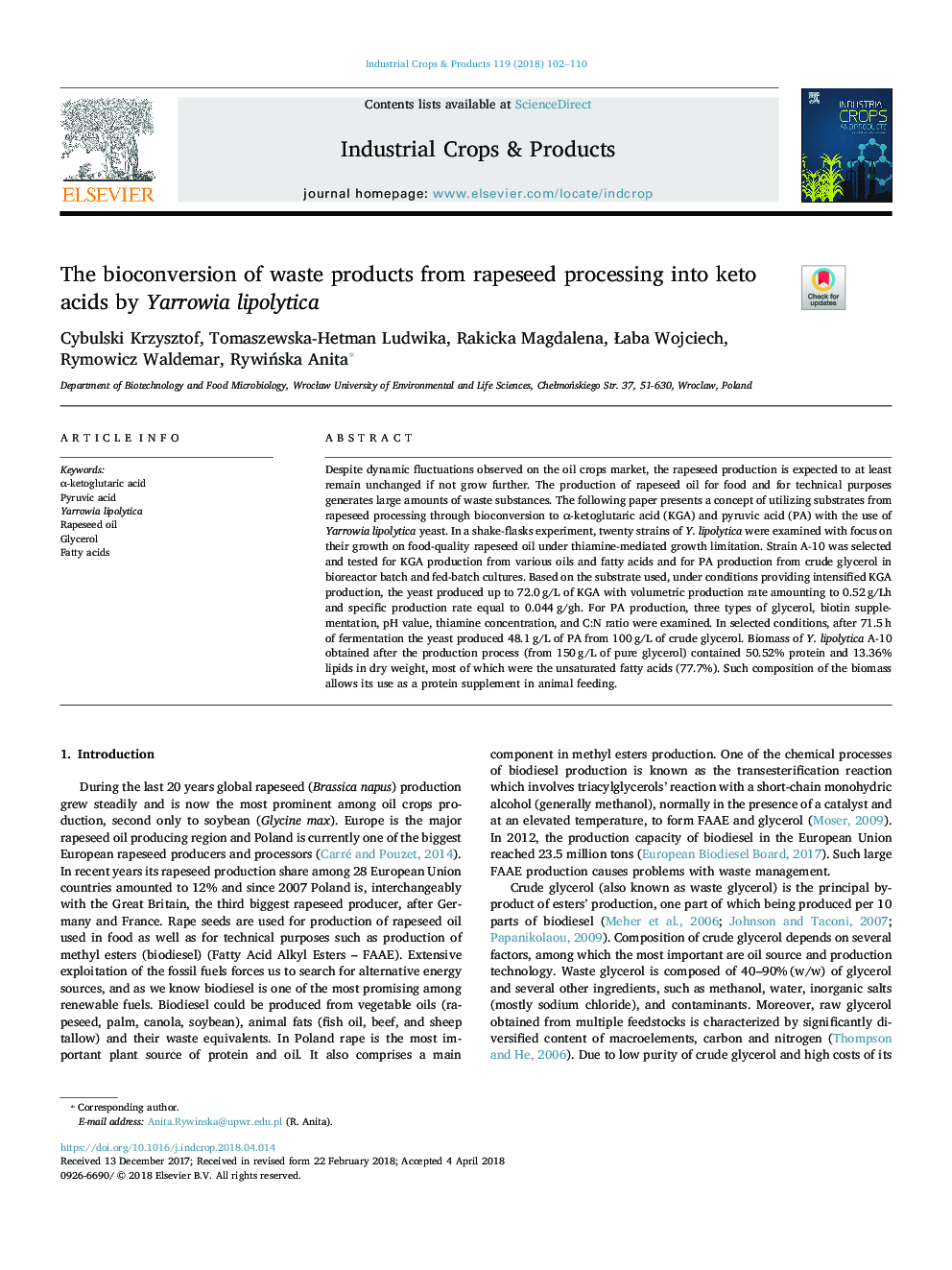| Article ID | Journal | Published Year | Pages | File Type |
|---|---|---|---|---|
| 8879948 | Industrial Crops and Products | 2018 | 9 Pages |
Abstract
Despite dynamic fluctuations observed on the oil crops market, the rapeseed production is expected to at least remain unchanged if not grow further. The production of rapeseed oil for food and for technical purposes generates large amounts of waste substances. The following paper presents a concept of utilizing substrates from rapeseed processing through bioconversion to α-ketoglutaric acid (KGA) and pyruvic acid (PA) with the use of Yarrowia lipolytica yeast. In a shake-flasks experiment, twenty strains of Y. lipolytica were examined with focus on their growth on food-quality rapeseed oil under thiamine-mediated growth limitation. Strain A-10 was selected and tested for KGA production from various oils and fatty acids and for PA production from crude glycerol in bioreactor batch and fed-batch cultures. Based on the substrate used, under conditions providing intensified KGA production, the yeast produced up to 72.0â¯g/L of KGA with volumetric production rate amounting to 0.52â¯g/Lh and specific production rate equal to 0.044â¯g/gh. For PA production, three types of glycerol, biotin supplementation, pH value, thiamine concentration, and C:N ratio were examined. In selected conditions, after 71.5â¯h of fermentation the yeast produced 48.1â¯g/L of PA from 100â¯g/L of crude glycerol. Biomass of Y. lipolytica A-10 obtained after the production process (from 150â¯g/L of pure glycerol) contained 50.52% protein and 13.36% lipids in dry weight, most of which were the unsaturated fatty acids (77.7%). Such composition of the biomass allows its use as a protein supplement in animal feeding.
Related Topics
Life Sciences
Agricultural and Biological Sciences
Agronomy and Crop Science
Authors
Cybulski Krzysztof, Tomaszewska-Hetman Ludwika, Rakicka Magdalena, Åaba Wojciech, Rymowicz Waldemar, RywiÅska Anita,
